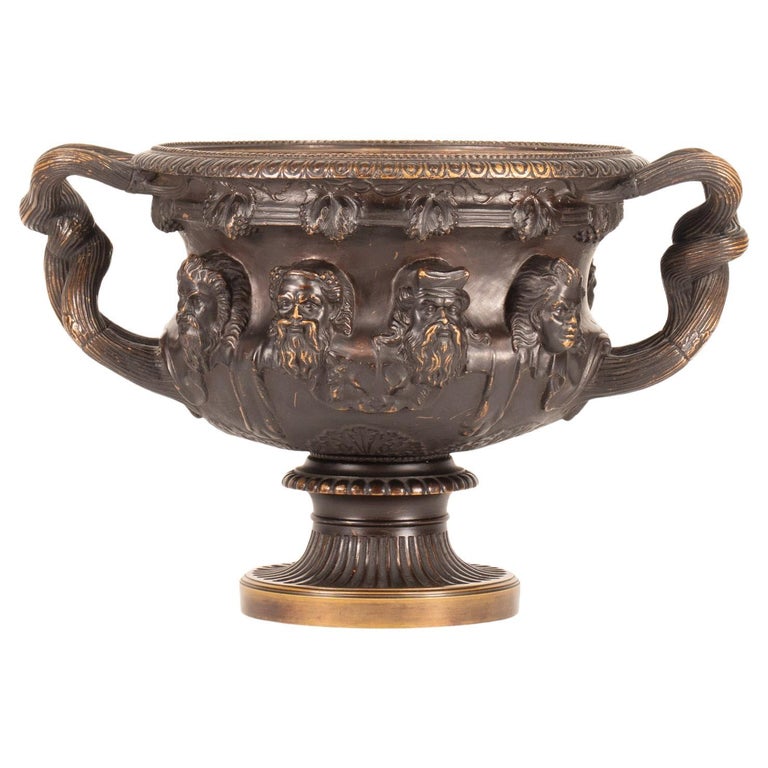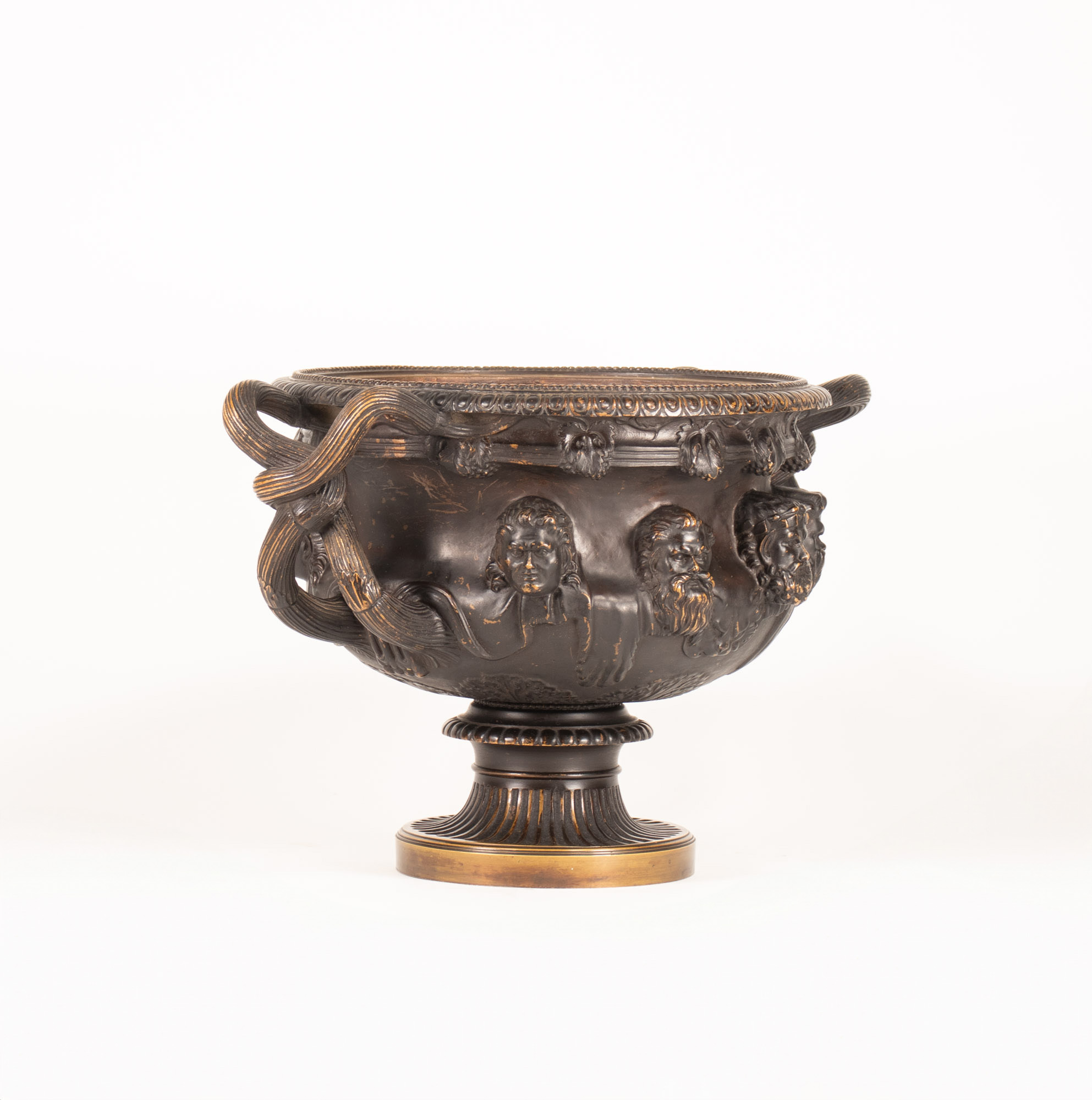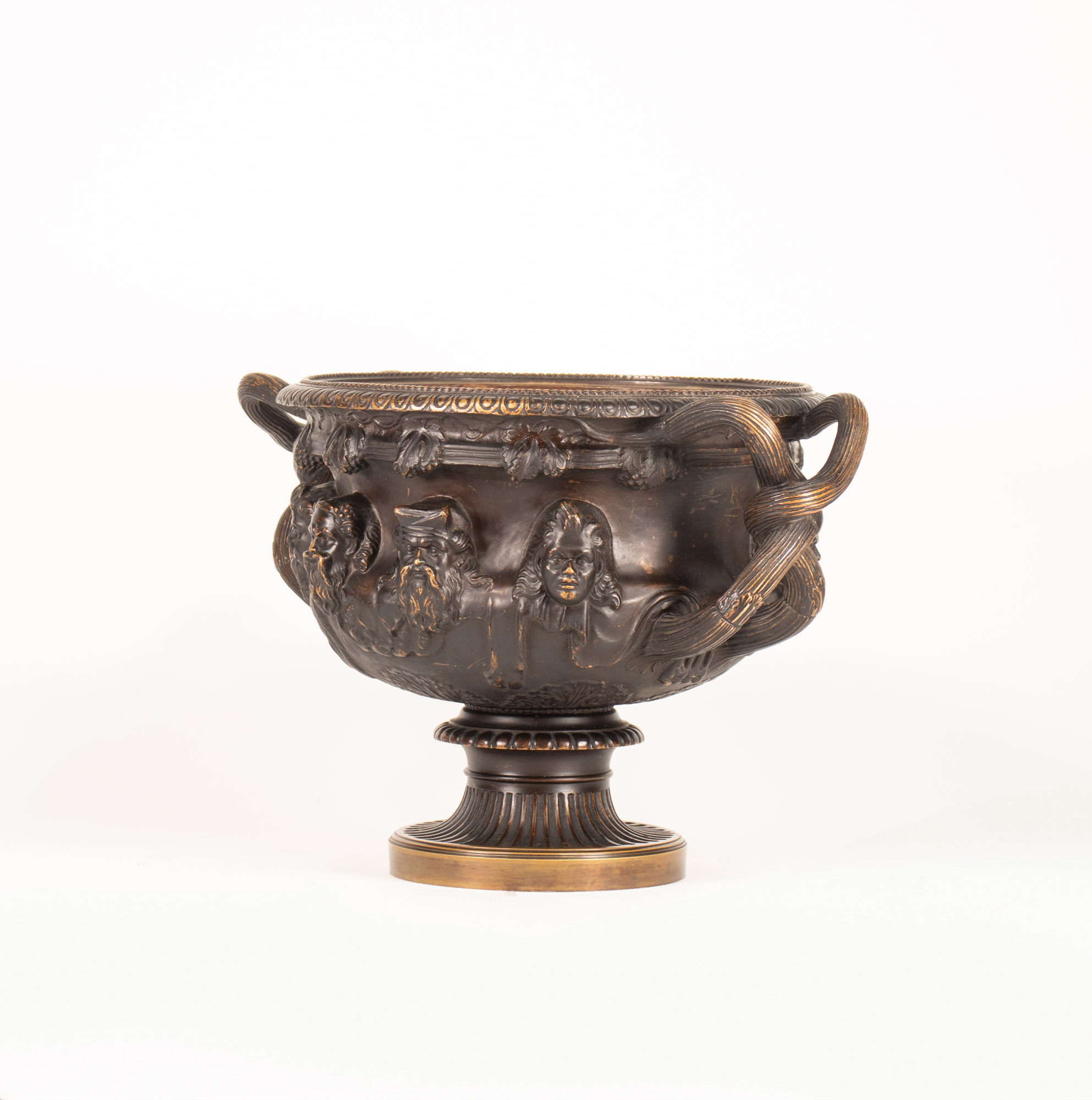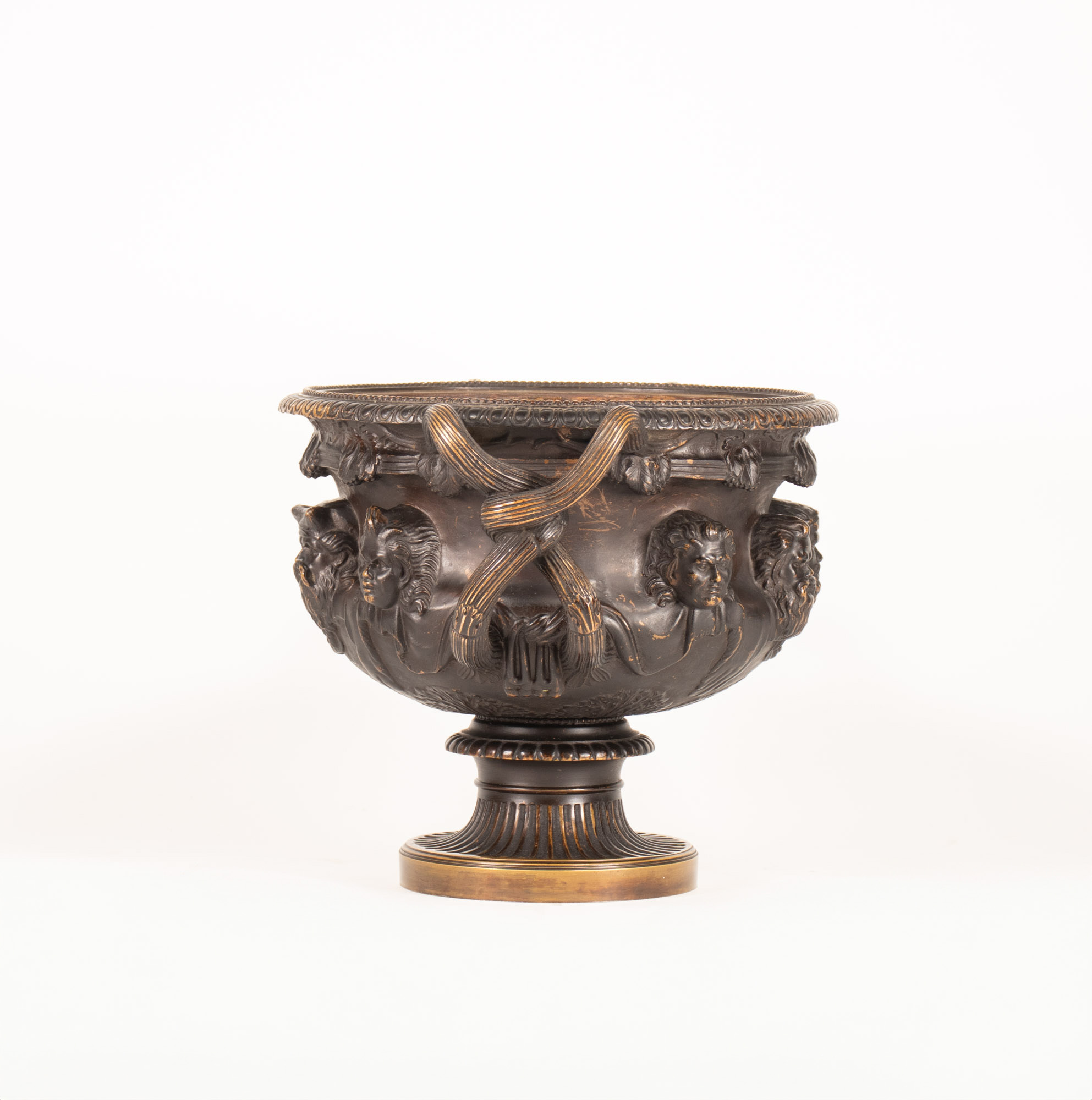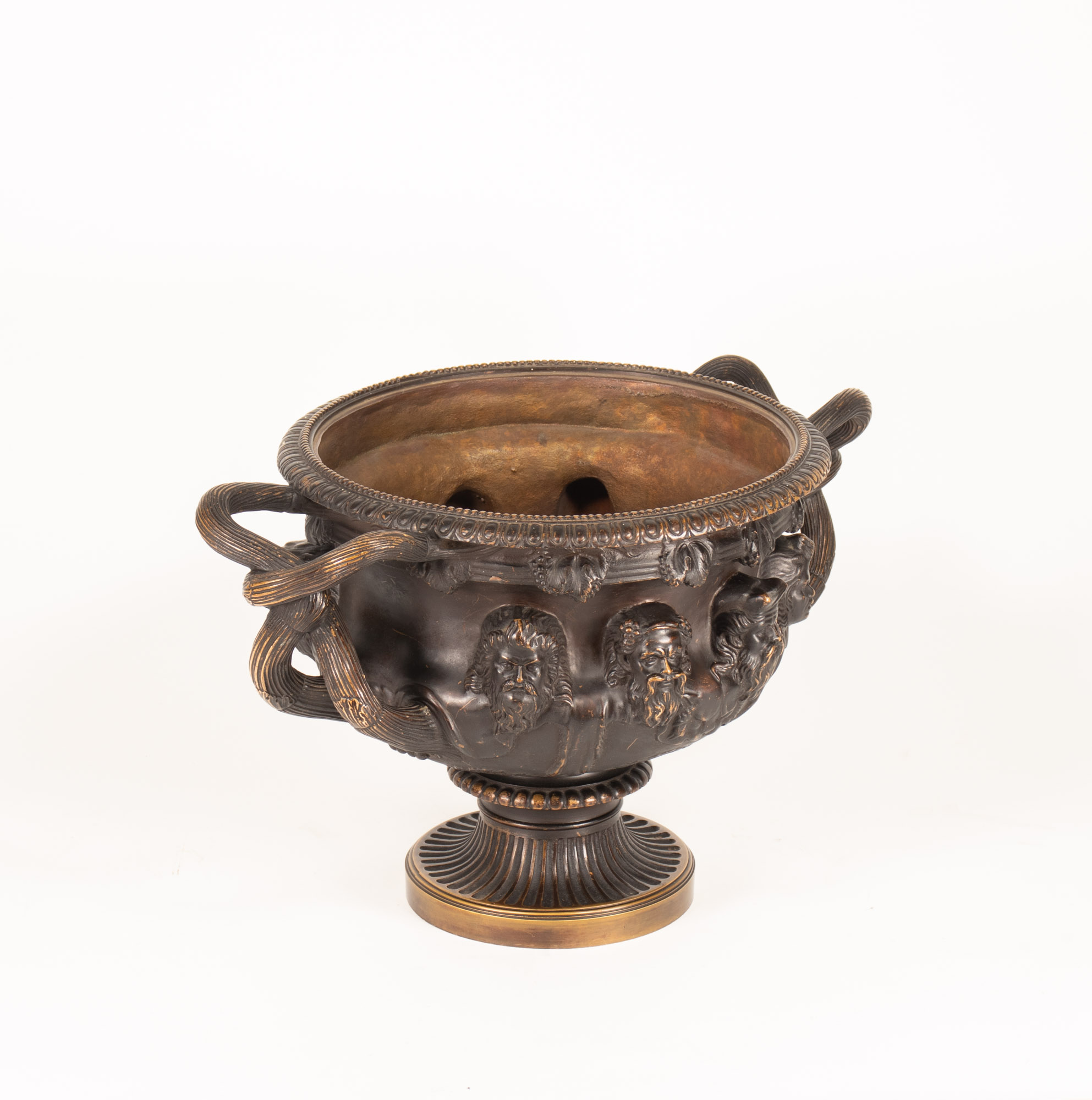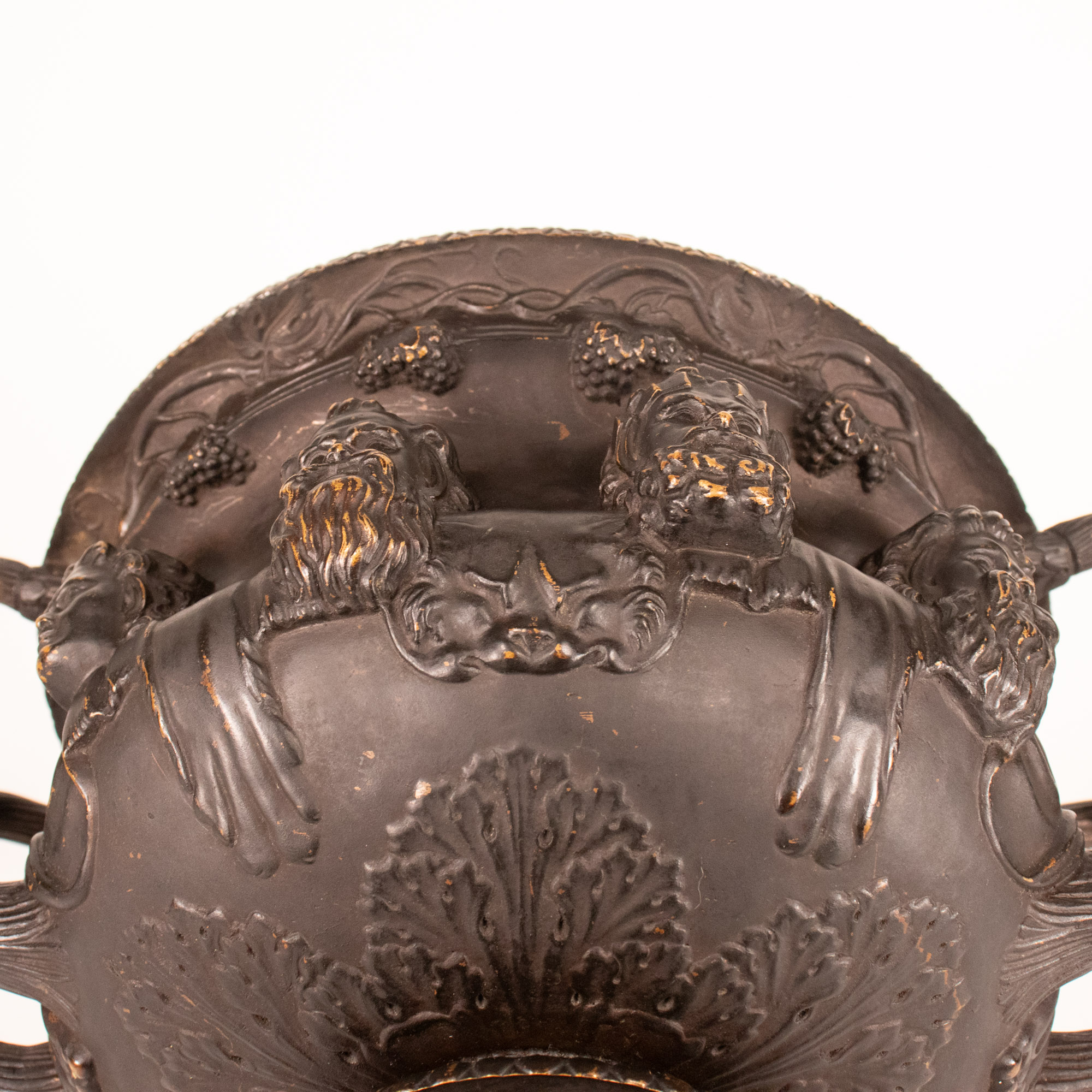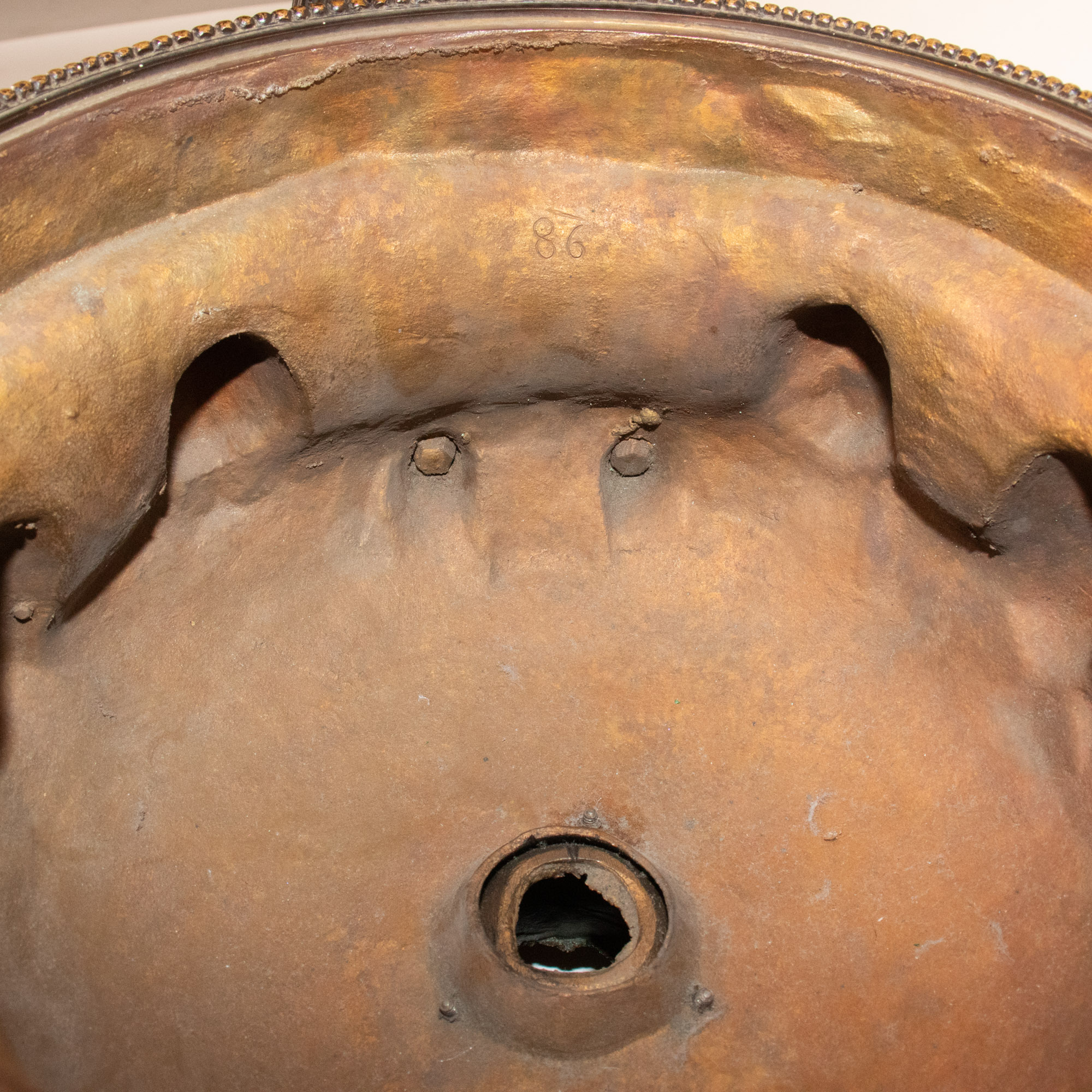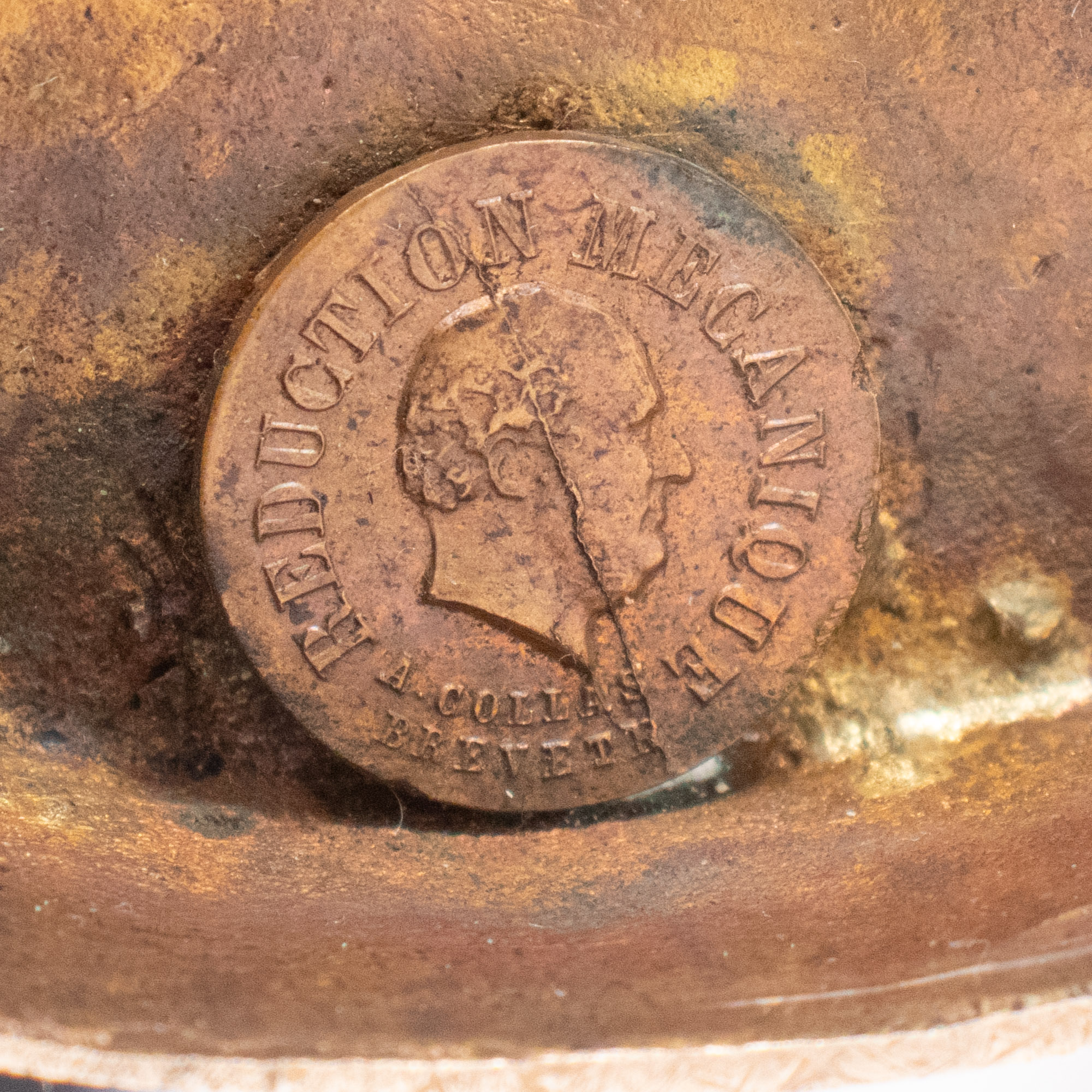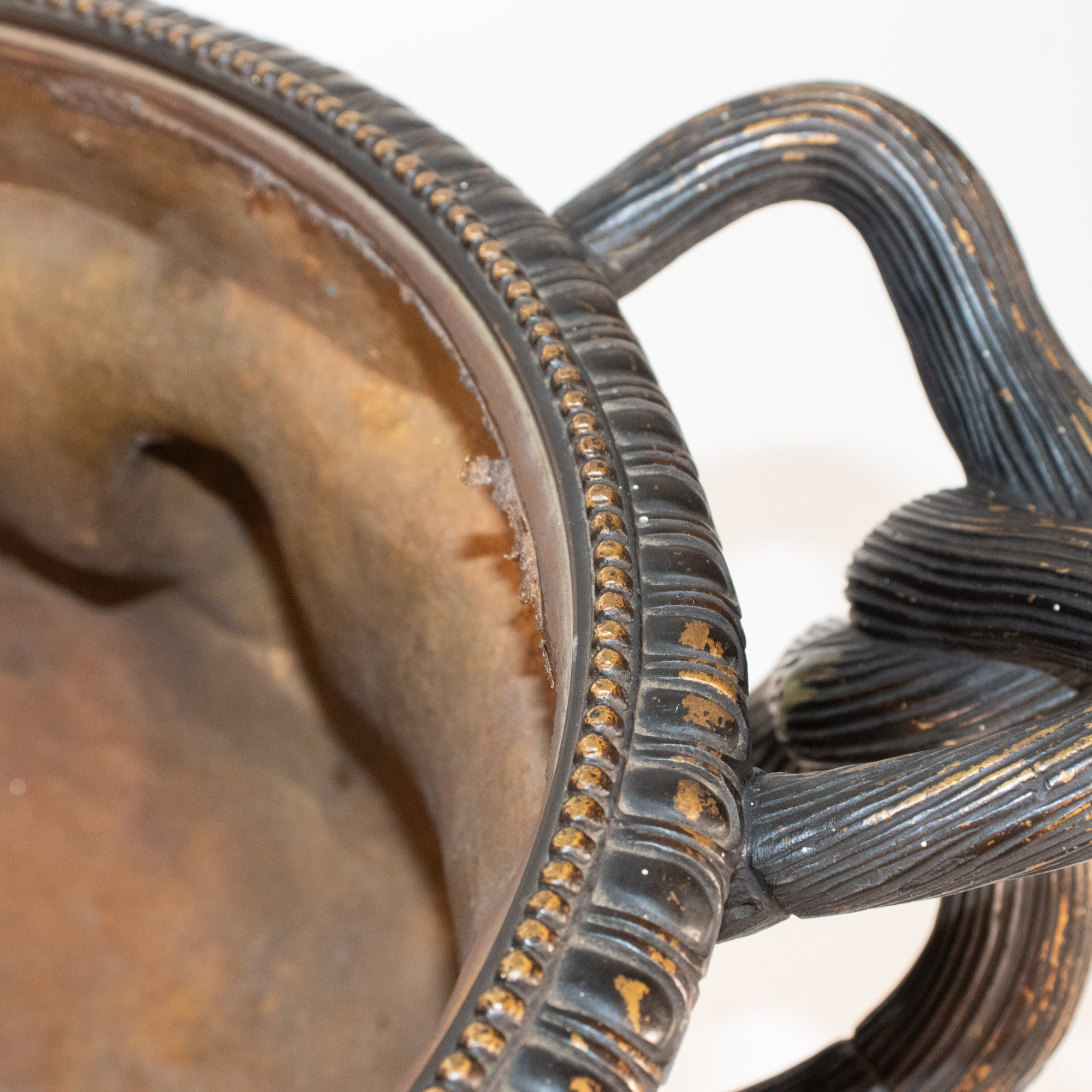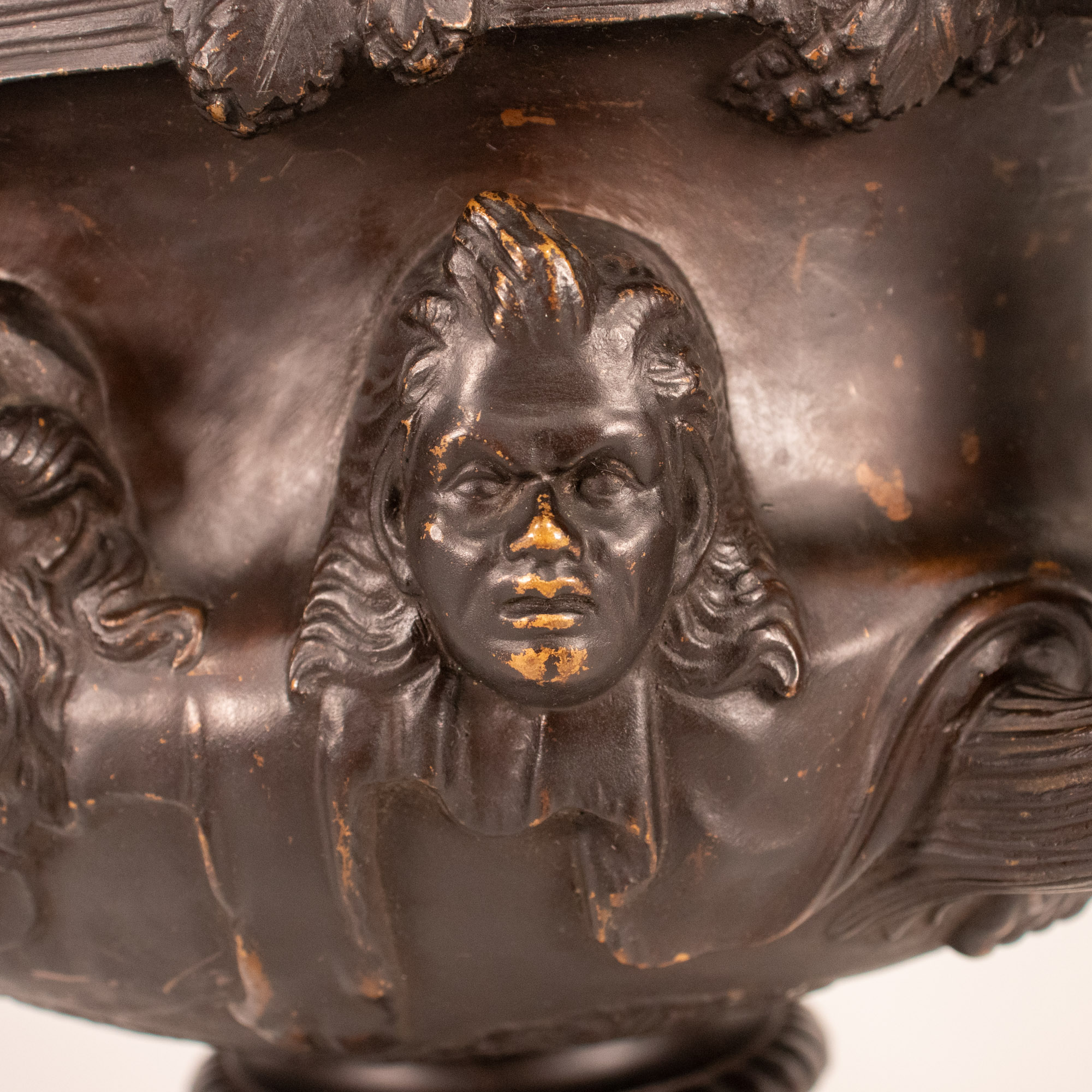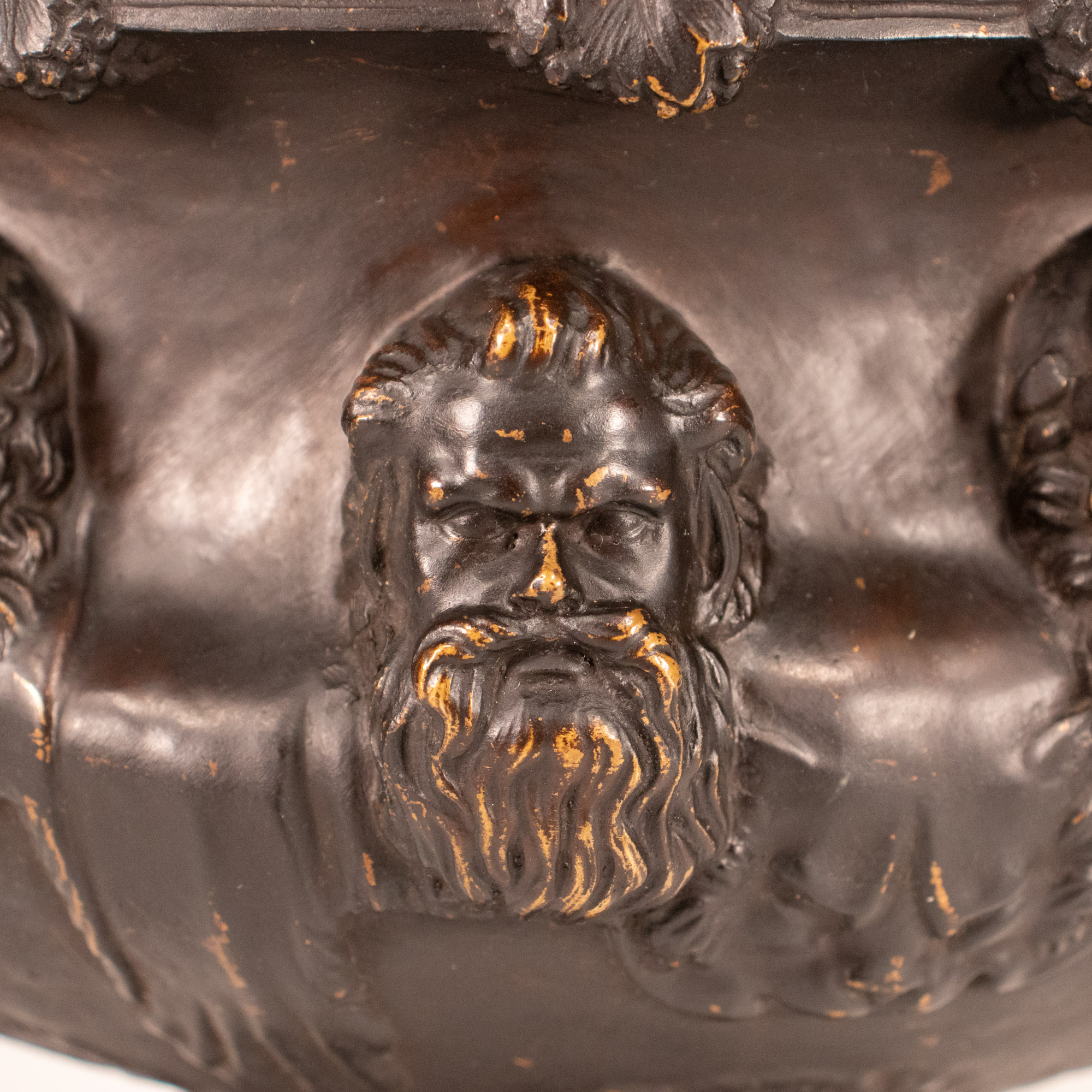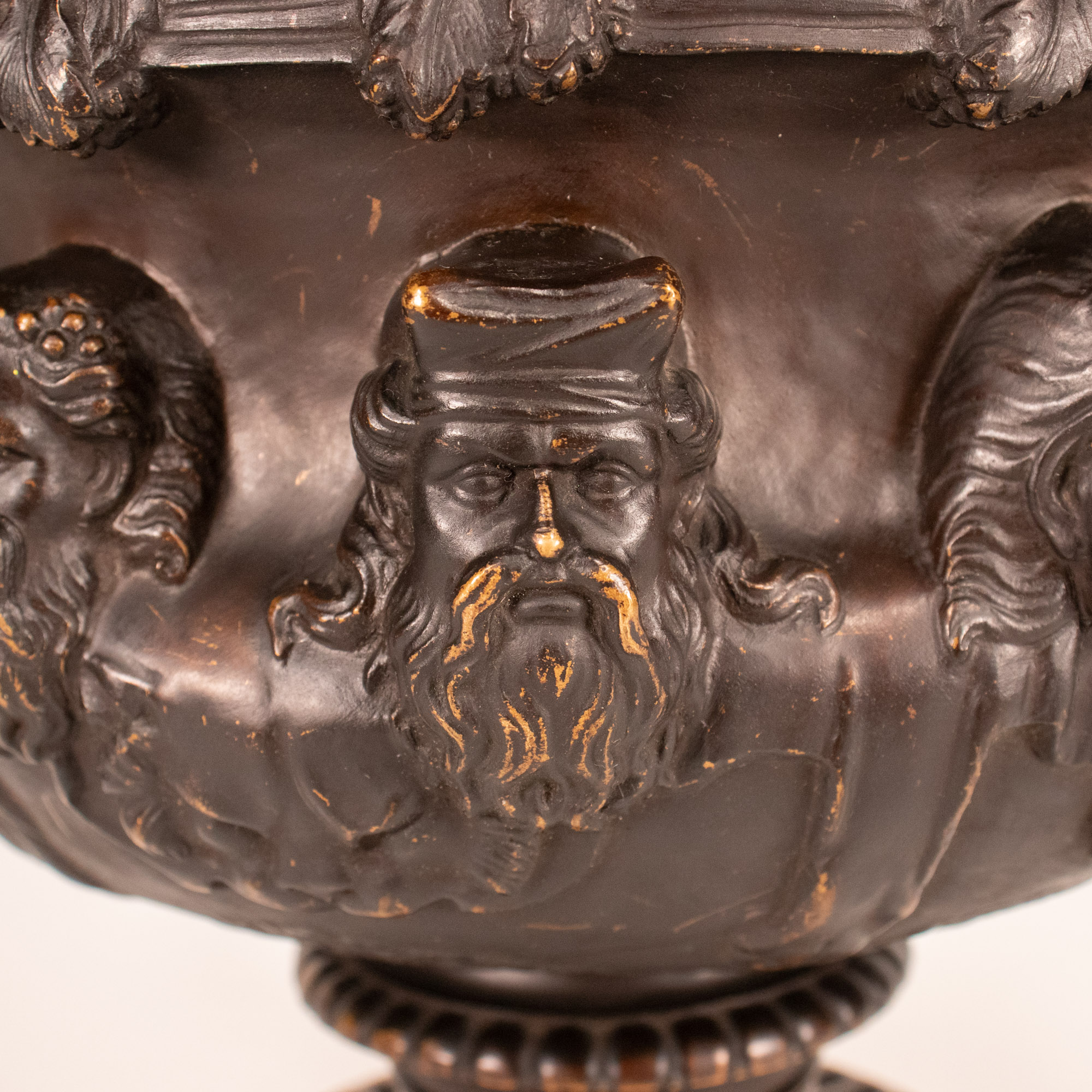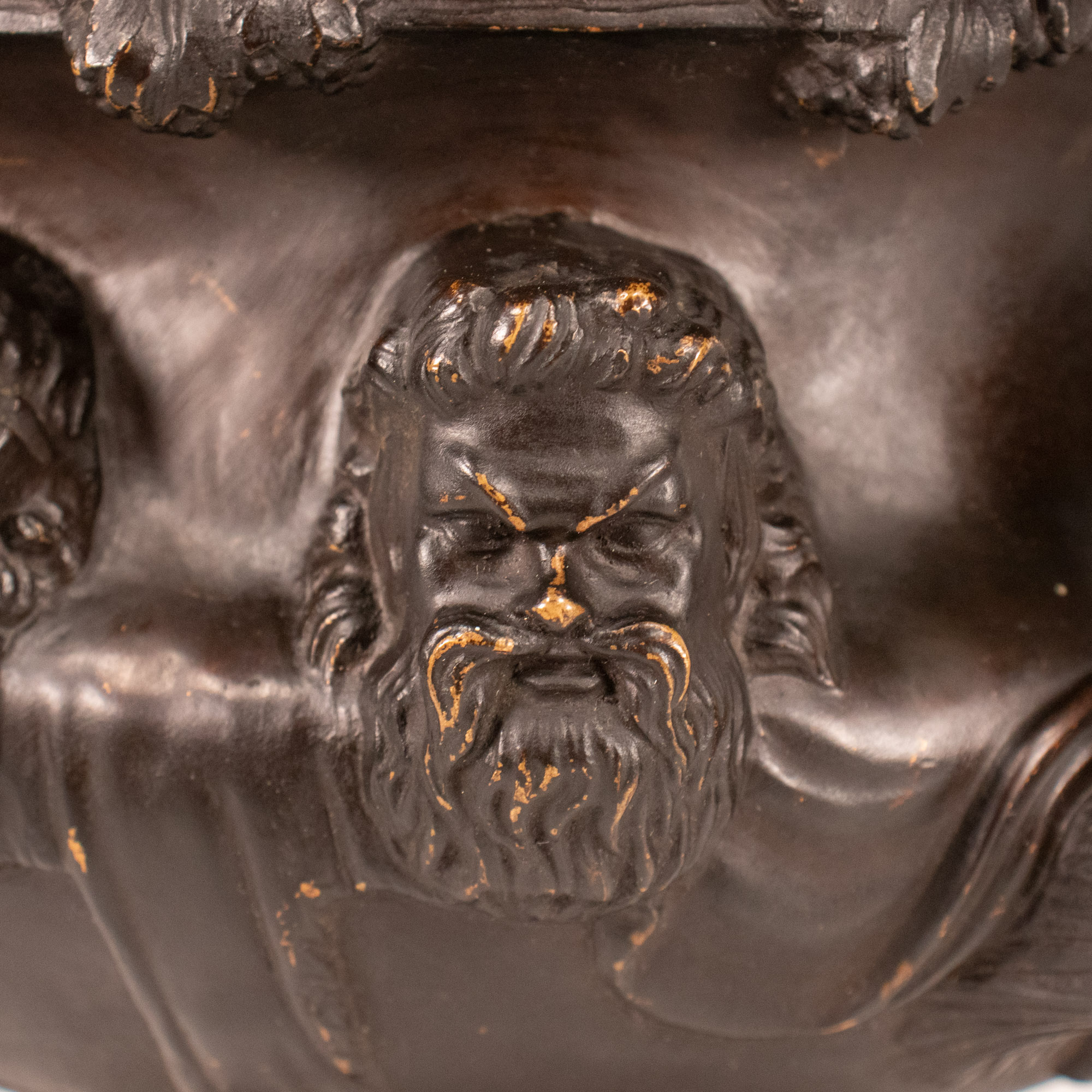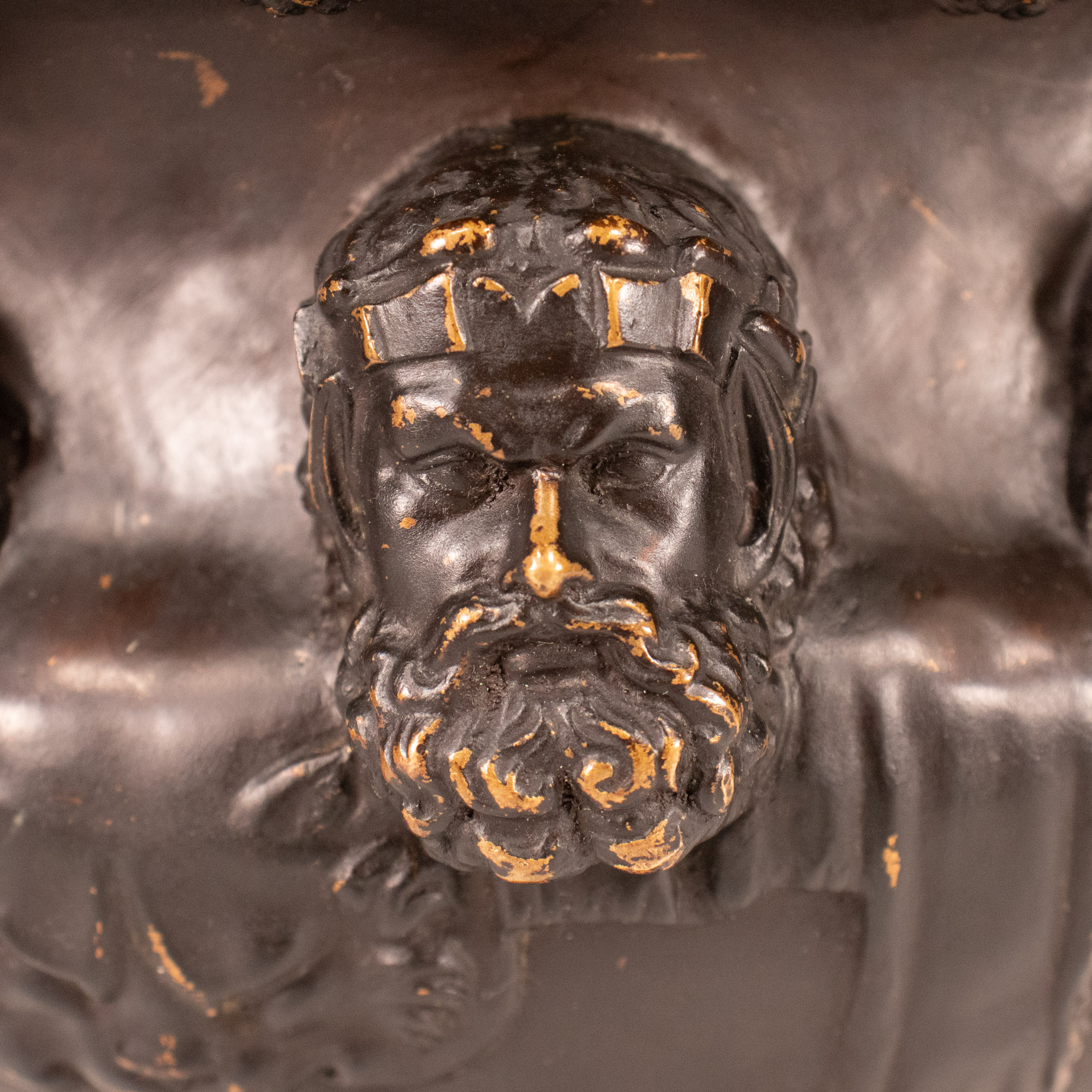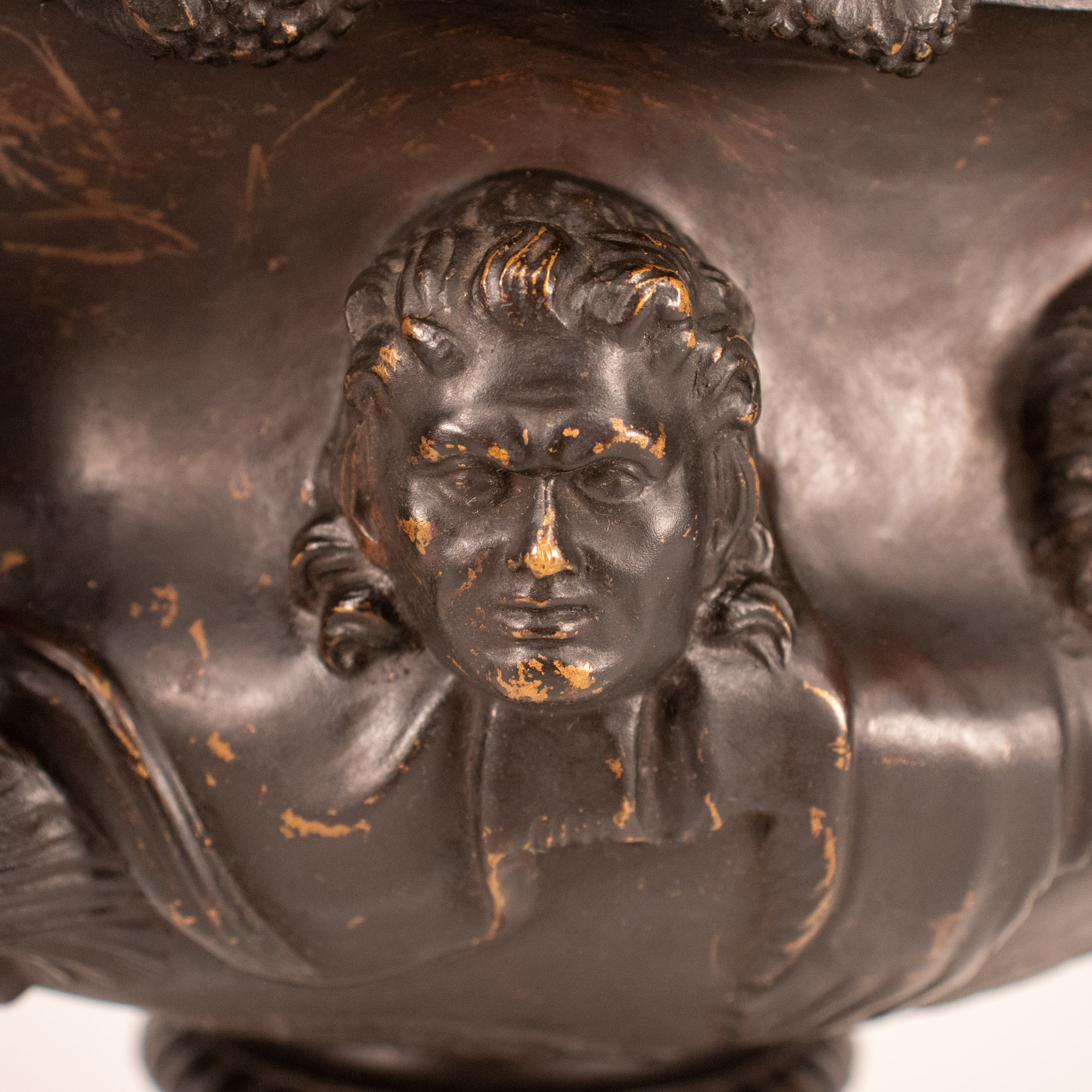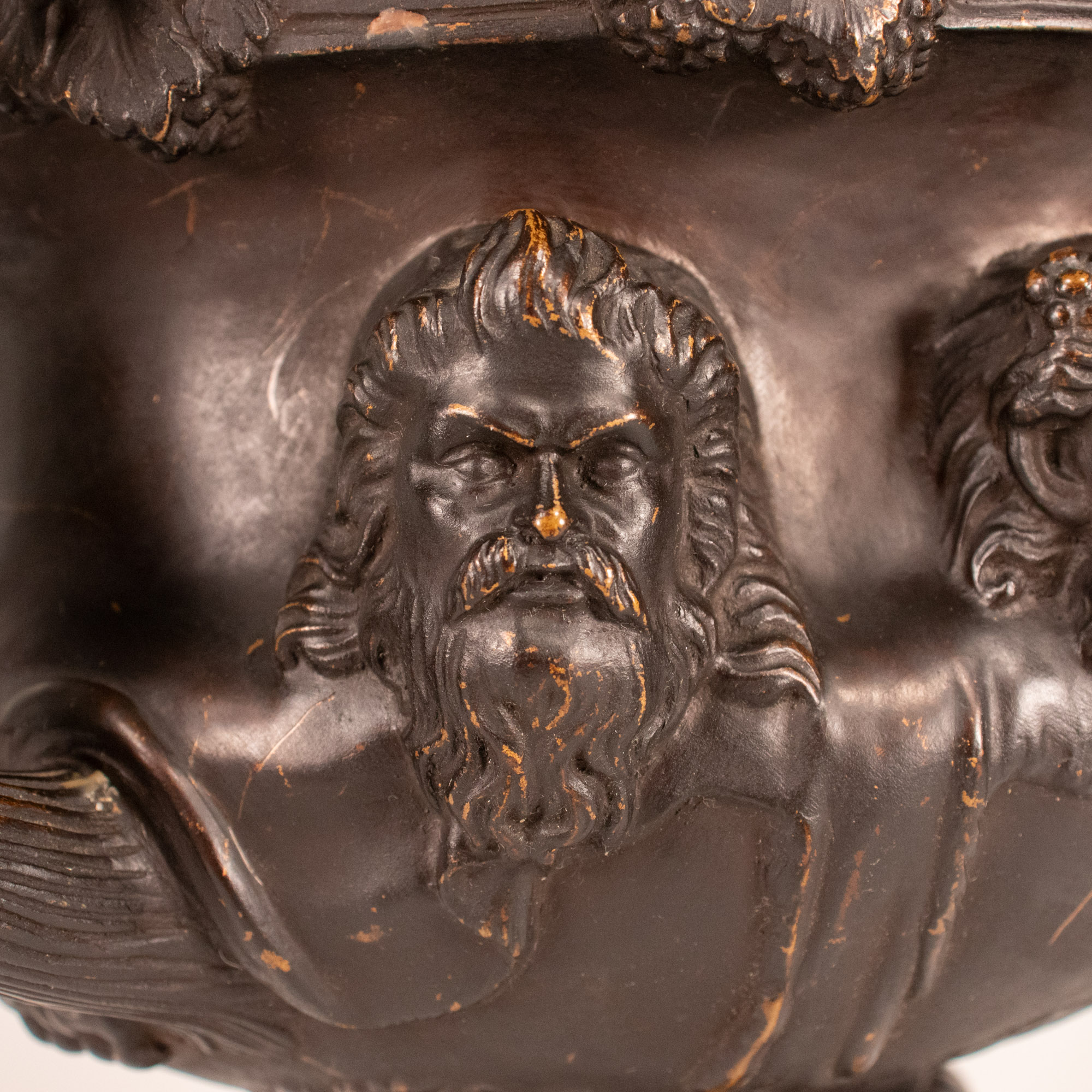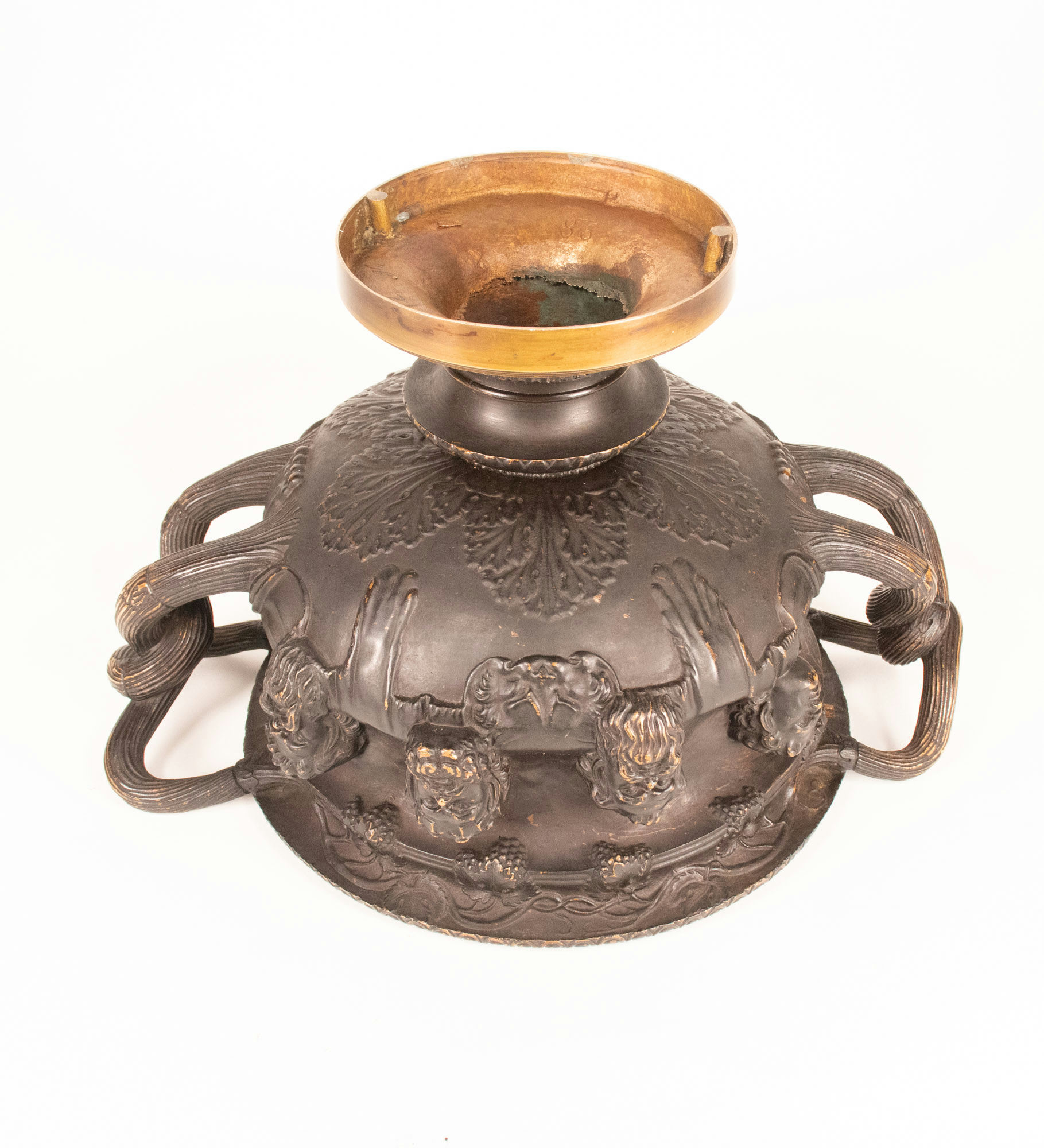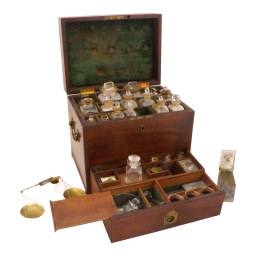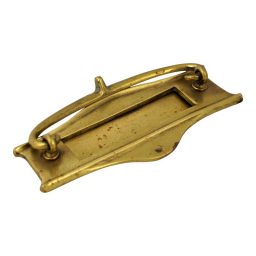Description
This exquisite 19th-century patinated bronze vase, crafted by the esteemed Ferdinand Barbedienne foundry, beautifully demonstrates the innovative reduction technique developed by Achille Collas. A masterpiece of technical innovation and artistic mastery, this vase reflects a pivotal period in art history.
Ferdinand Barbedienne, a distinguished French bronze founder, forged a groundbreaking partnership with engineer and inventor Achille Collas in the 19th century. Collas’s invention of the “réduction mécanique” in 1836 revolutionized sculpture by enabling precise scaling down of larger works while preserving intricate details. This innovation made fine art more accessible to the public. Recognizing its potential, Barbedienne joined forces with Collas in 1838 to establish “Barbedienne & Co.” Their collaboration led to high-quality, smaller reproductions of notable sculptures, significantly enhancing public appreciation of art during that era.
This vase exemplifies the successful melding of Collas’s mechanical reduction process with Barbedienne’s foundry expertise. Such dual attribution is crucial for collectors and art historians, highlighting the technological and artistic significance of these two influential figures.
As a prime example from the mid-19th century Grand Tour tradition, this bronze model was inspired by the Albani Vase. The Albani Vase is a famous ancient Roman marble vase known for its intricate reliefs and classical design. The original Albani Vase is part of the collection at Villa Albani in Rome, assembled by Cardinal Alessandro Albani in the 18th century.
H=9 in. W=14.5 in. D=10 in. 15 lbs.

